Andreas Grammenos
A Summary of the ComParE COVID-19 Challenges
Feb 17, 2022
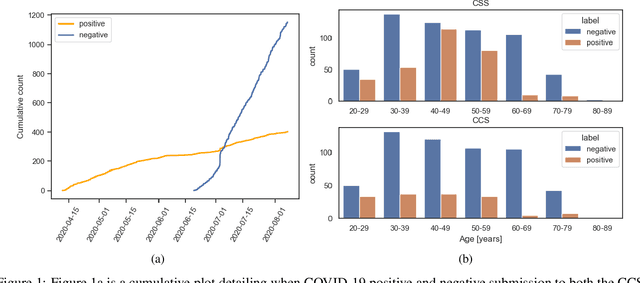
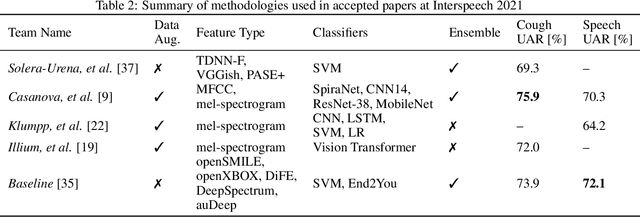
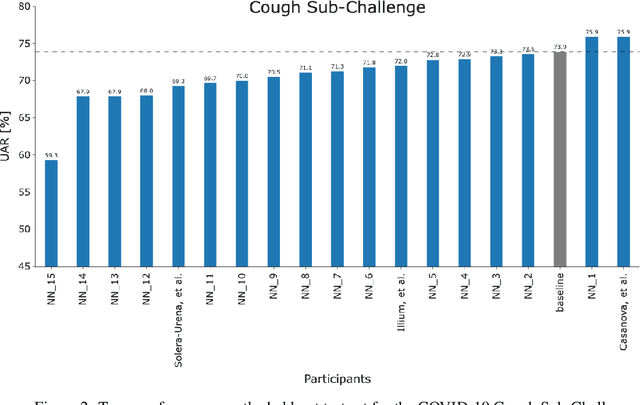
Abstract:The COVID-19 pandemic has caused massive humanitarian and economic damage. Teams of scientists from a broad range of disciplines have searched for methods to help governments and communities combat the disease. One avenue from the machine learning field which has been explored is the prospect of a digital mass test which can detect COVID-19 from infected individuals' respiratory sounds. We present a summary of the results from the INTERSPEECH 2021 Computational Paralinguistics Challenges: COVID-19 Cough, (CCS) and COVID-19 Speech, (CSS).
COVID-19 Disease Progression Prediction via Audio Signals: A Longitudinal Study
Jan 04, 2022



Abstract:Recent work has shown the potential of the use of audio data in screening for COVID-19. However, very little exploration has been done of monitoring disease progression, especially recovery in COVID-19 through audio. Tracking disease progression characteristics and patterns of recovery could lead to tremendous insights and more timely treatment or treatment adjustment, as well as better resources management in health care systems. The primary objective of this study is to explore the potential of longitudinal audio dynamics for COVID-19 monitoring using sequential deep learning techniques, focusing on prediction of disease progression and, especially, recovery trend prediction. We analysed crowdsourced respiratory audio data from 212 individuals over 5 days to 385 days, alongside their self-reported COVID-19 test results. We first explore the benefits of capturing longitudinal dynamics of audio biomarkers for COVID-19 detection. The strong performance, yielding an AUC-ROC of 0.79, sensitivity of 0.75 and specificity of 0.70, supports the effectiveness of the approach compared to methods that do not leverage longitudinal dynamics. We further examine the predicted disease progression trajectory, which displays high consistency with the longitudinal test results with a correlation of 0.76 in the test cohort, and 0.86 in a subset of the test cohort with 12 participants who report disease recovery. Our findings suggest that monitoring COVID-19 progression via longitudinal audio data has enormous potential in the tracking of individuals' disease progression and recovery.
Sounds of COVID-19: exploring realistic performance of audio-based digital testing
Jun 29, 2021



Abstract:Researchers have been battling with the question of how we can identify Coronavirus disease (COVID-19) cases efficiently, affordably and at scale. Recent work has shown how audio based approaches, which collect respiratory audio data (cough, breathing and voice) can be used for testing, however there is a lack of exploration of how biases and methodological decisions impact these tools' performance in practice. In this paper, we explore the realistic performance of audio-based digital testing of COVID-19. To investigate this, we collected a large crowdsourced respiratory audio dataset through a mobile app, alongside recent COVID-19 test result and symptoms intended as a ground truth. Within the collected dataset, we selected 5,240 samples from 2,478 participants and split them into different participant-independent sets for model development and validation. Among these, we controlled for potential confounding factors (such as demographics and language). The unbiased model takes features extracted from breathing, coughs, and voice signals as predictors and yields an AUC-ROC of 0.71 (95\% CI: 0.65$-$0.77). We further explore different unbalanced distributions to show how biases and participant splits affect performance. Finally, we discuss how the realistic model presented could be integrated in clinical practice to realize continuous, ubiquitous, sustainable and affordable testing at population scale.
The INTERSPEECH 2021 Computational Paralinguistics Challenge: COVID-19 Cough, COVID-19 Speech, Escalation & Primates
Feb 24, 2021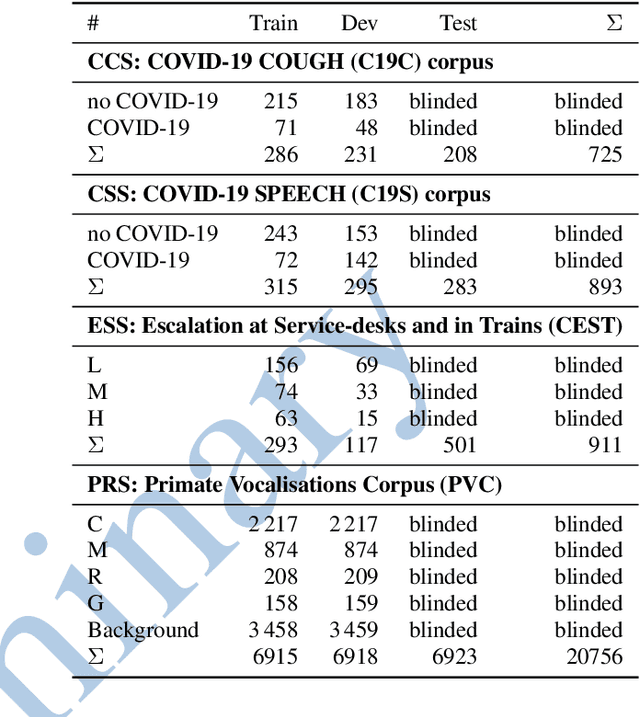

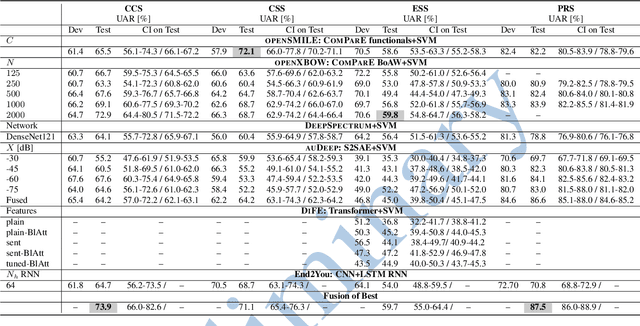
Abstract:The INTERSPEECH 2021 Computational Paralinguistics Challenge addresses four different problems for the first time in a research competition under well-defined conditions: In the COVID-19 Cough and COVID-19 Speech Sub-Challenges, a binary classification on COVID-19 infection has to be made based on coughing sounds and speech; in the Escalation SubChallenge, a three-way assessment of the level of escalation in a dialogue is featured; and in the Primates Sub-Challenge, four species vs background need to be classified. We describe the Sub-Challenges, baseline feature extraction, and classifiers based on the 'usual' COMPARE and BoAW features as well as deep unsupervised representation learning using the AuDeep toolkit, and deep feature extraction from pre-trained CNNs using the Deep Spectrum toolkit; in addition, we add deep end-to-end sequential modelling, and partially linguistic analysis.
Exploring Automatic COVID-19 Diagnosis via voice and symptoms from Crowdsourced Data
Feb 10, 2021



Abstract:The development of fast and accurate screening tools, which could facilitate testing and prevent more costly clinical tests, is key to the current pandemic of COVID-19. In this context, some initial work shows promise in detecting diagnostic signals of COVID-19 from audio sounds. In this paper, we propose a voice-based framework to automatically detect individuals who have tested positive for COVID-19. We evaluate the performance of the proposed framework on a subset of data crowdsourced from our app, containing 828 samples from 343 participants. By combining voice signals and reported symptoms, an AUC of $0.79$ has been attained, with a sensitivity of $0.68$ and a specificity of $0.82$. We hope that this study opens the door to rapid, low-cost, and convenient pre-screening tools to automatically detect the disease.
Exploring Automatic Diagnosis of COVID-19 from Crowdsourced Respiratory Sound Data
Jun 10, 2020



Abstract:Audio signals generated by the human body (e.g., sighs, breathing, heart, digestion, vibration sounds) have routinely been used by clinicians as diagnostic or progression indicators for diseases and disease onset. However, until recently, such signals were usually collected through manual auscultation at scheduled visits. Research has now started to use digital technology to gather bodily sounds (e.g., from digital stethoscopes) for cardiovascular or respiratory examination, which could then be used for automatic analysis. Some initial work shows promise in detecting diagnostic signals of COVID-19 from voice and coughs. In this paper we describe our data analysis over a large-scale crowdsourced dataset of respiratory sounds collected to aid diagnosis of COVID-19. We use coughs and breathing to understand how discernible COVID-19 sounds are from those in asthma or healthy controls. Our results show that even a simple binary machine learning classifier is able to classify correctly healthy and COVID-19 sounds. We also show how we distinguish a user who tested positive for COVID-19 and has a cough from a healthy user with cough, and users who tested positive for COVID-19 and have a cough from users with asthma and a cough. Our models achieve an AUC above 70% across all tasks. Clearly these results are preliminary and only scratch the surface of the possibilities of the exploitation of this type of data and audio-based machine learning. This work opens the door to further investigation of how automatically analysed respiratory patterns could be used as pre-screening signals to aid COVID-19 diagnosis.
Federated PCA with Adaptive Rank Estimation
Jul 18, 2019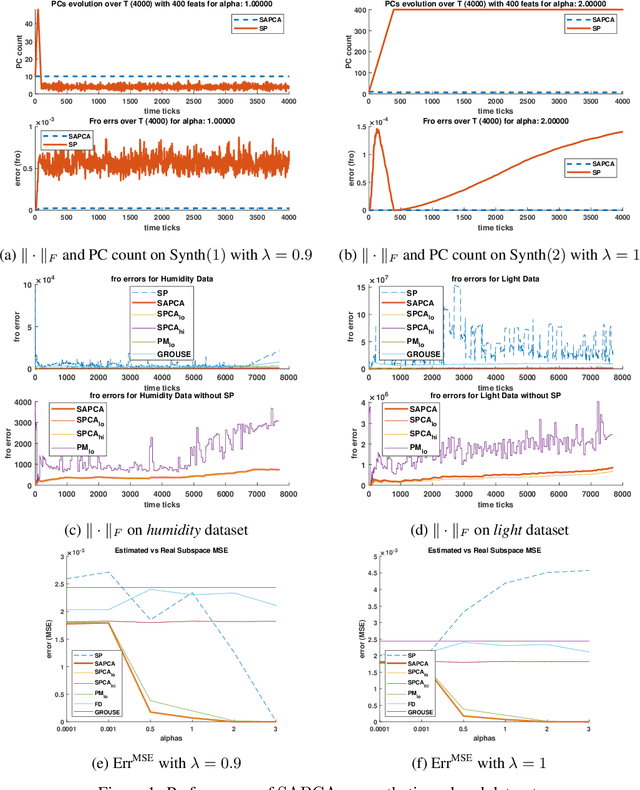

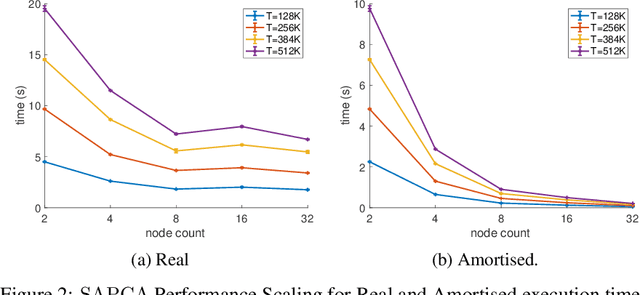
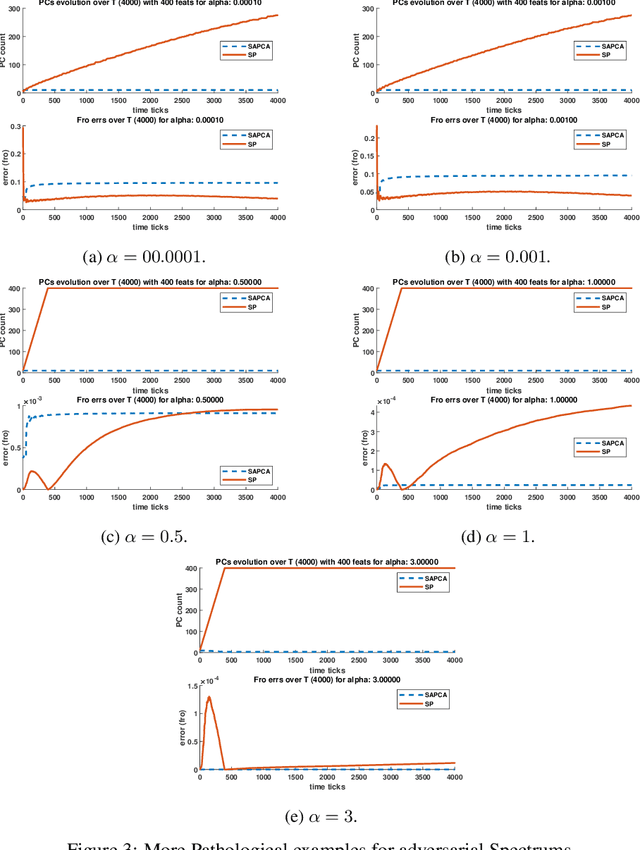
Abstract:In many online machine learning and data science tasks such as data summarisation and feature compression, $d$-dimensional vectors are usually distributed across a large number of clients in a decentralised network and collected in a streaming fashion. This is increasingly common in modern applications due to the sheer volume of data generated and the clients' constrained resources. In this setting, some clients are required to compute an update to a centralised target model independently using local data while other clients aggregate these updates with a low-complexity merging algorithm. However, some clients with limited storage might not be able to store all of the data samples if $d$ is large, nor compute procedures requiring at least $\Omega(d^2)$ storage-complexity such as Principal Component Analysis, Subspace Tracking, or general Feature Correlation. In this work, we present a novel federated algorithm for PCA that is able to adaptively estimate the rank $r$ of the dataset and compute its $r$ leading principal components when only $O(dr)$ memory is available. This inherent adaptability implies that $r$ does not have to be supplied as a fixed hyper-parameter which is beneficial when the underlying data distribution is not known in advance, such as in a streaming setting. Numerical simulations show that, while using limited-memory, our algorithm exhibits state-of-the-art performance that closely matches or outperforms traditional non-federated algorithms, and in the absence of communication latency, it exhibits attractive horizontal scalability.
 Add to Chrome
Add to Chrome Add to Firefox
Add to Firefox Add to Edge
Add to Edge